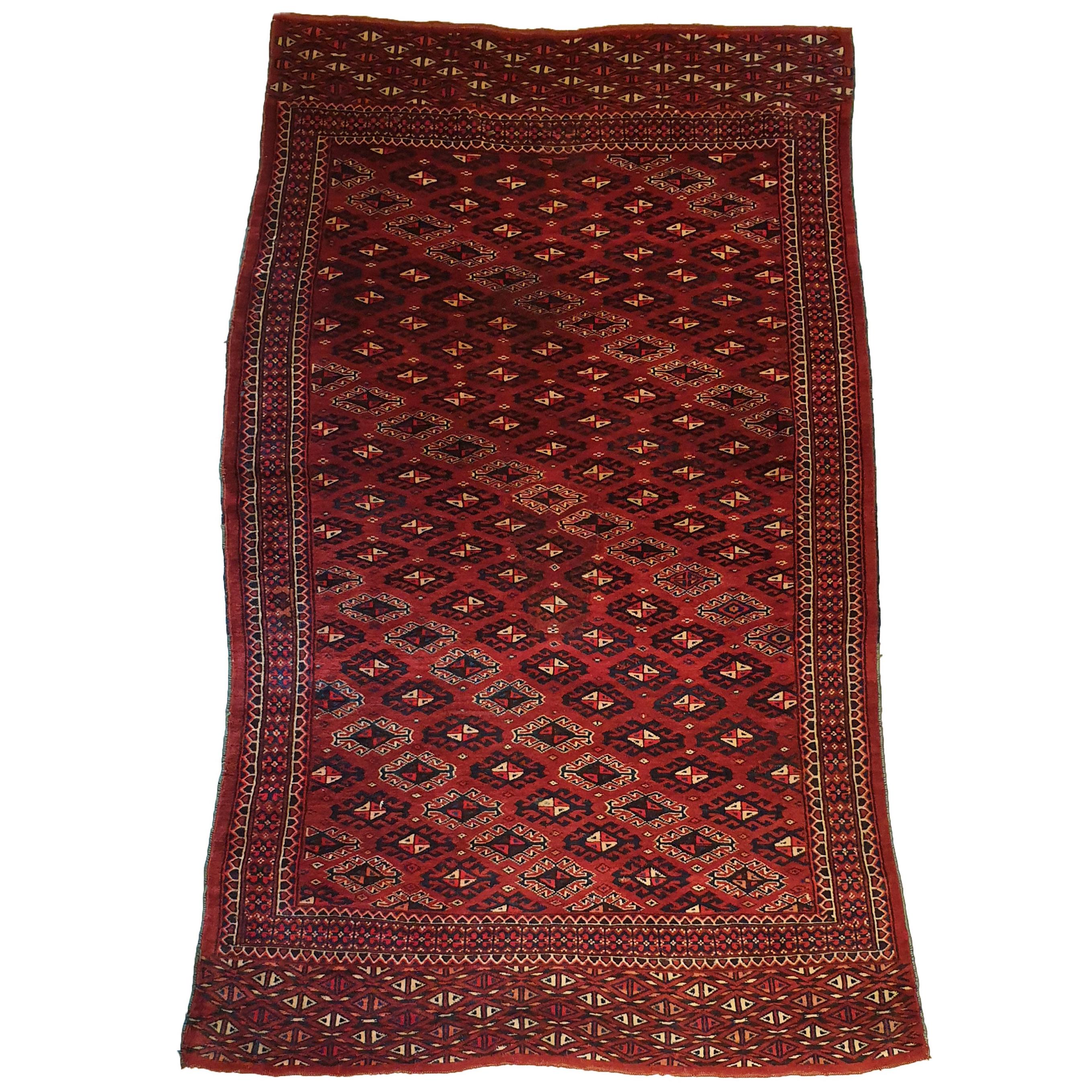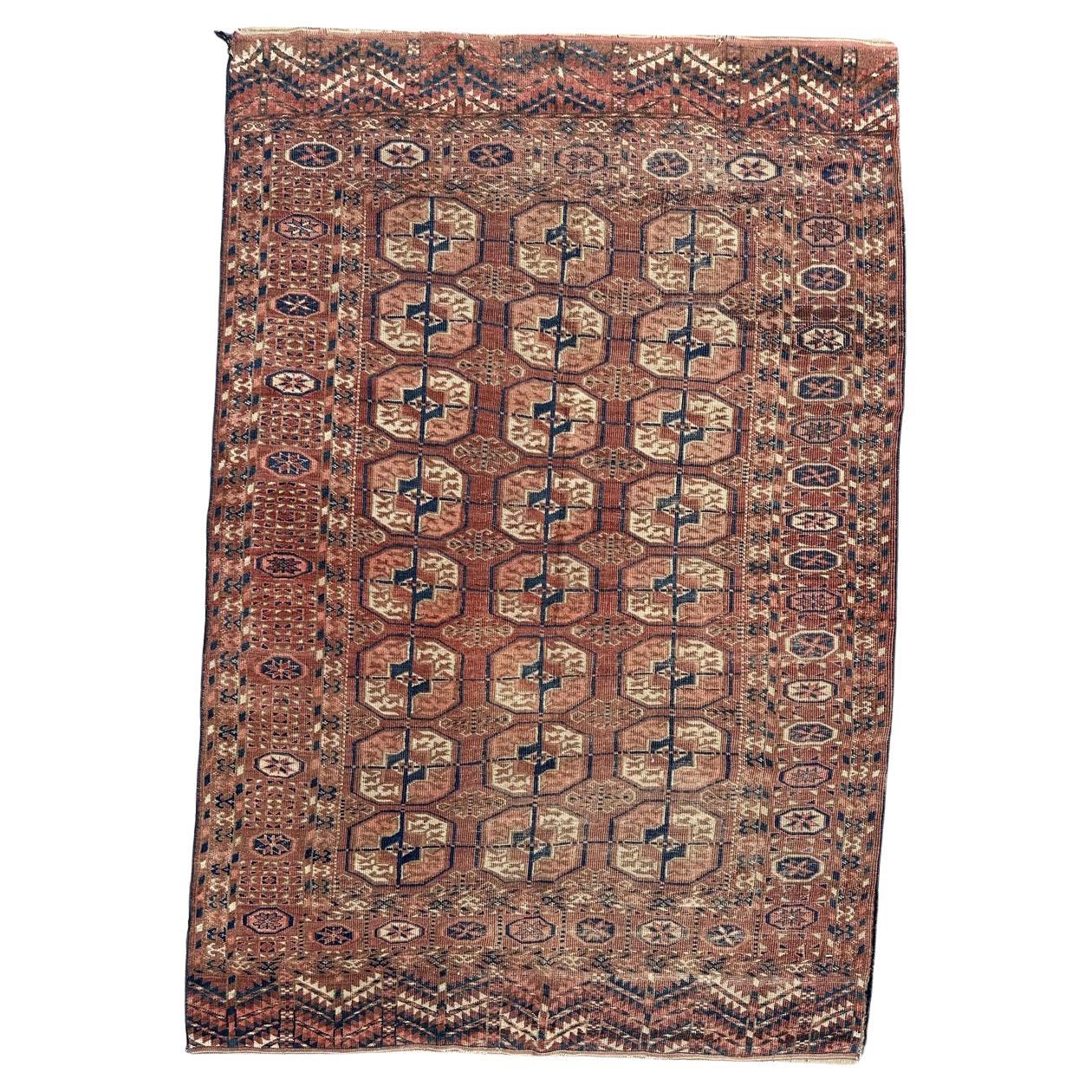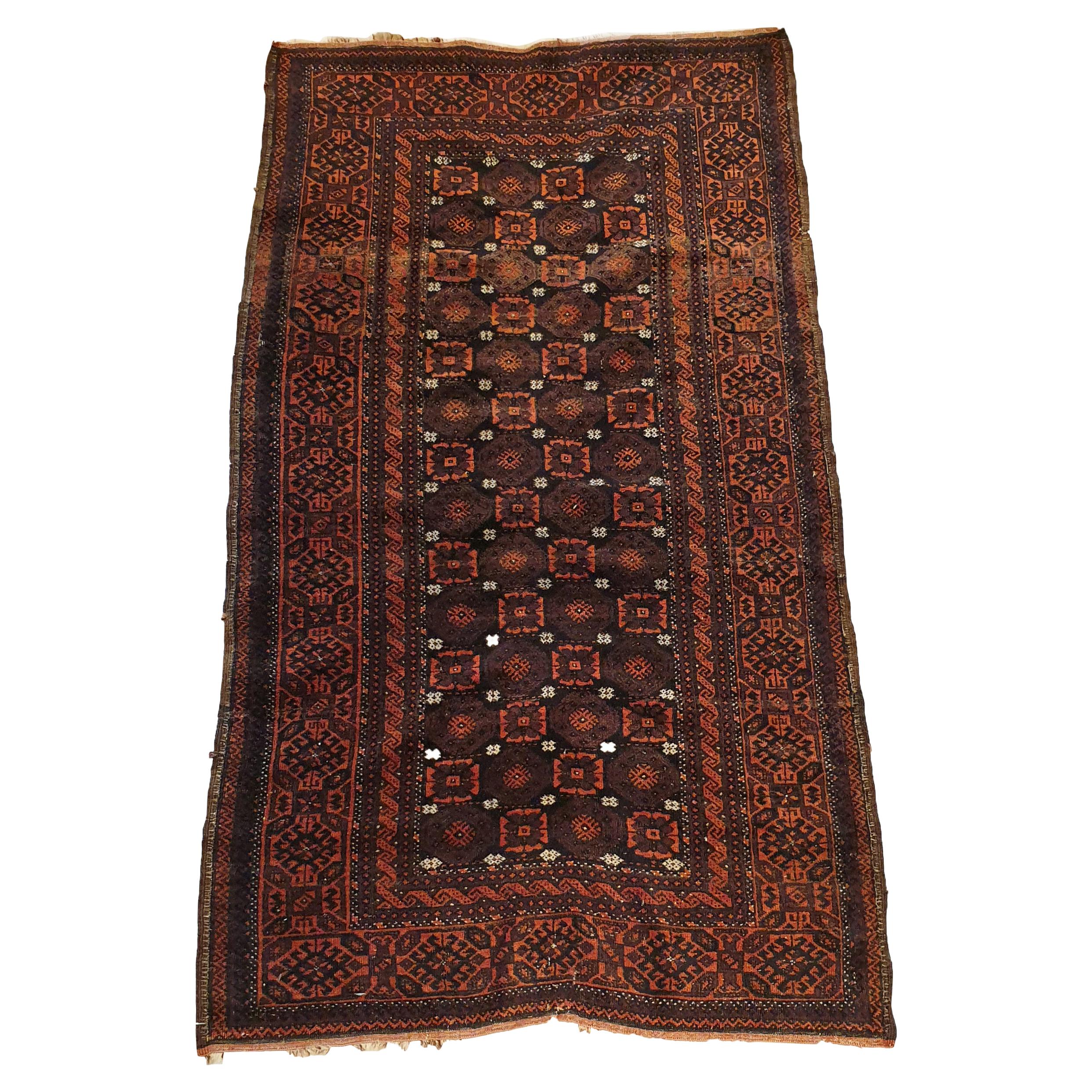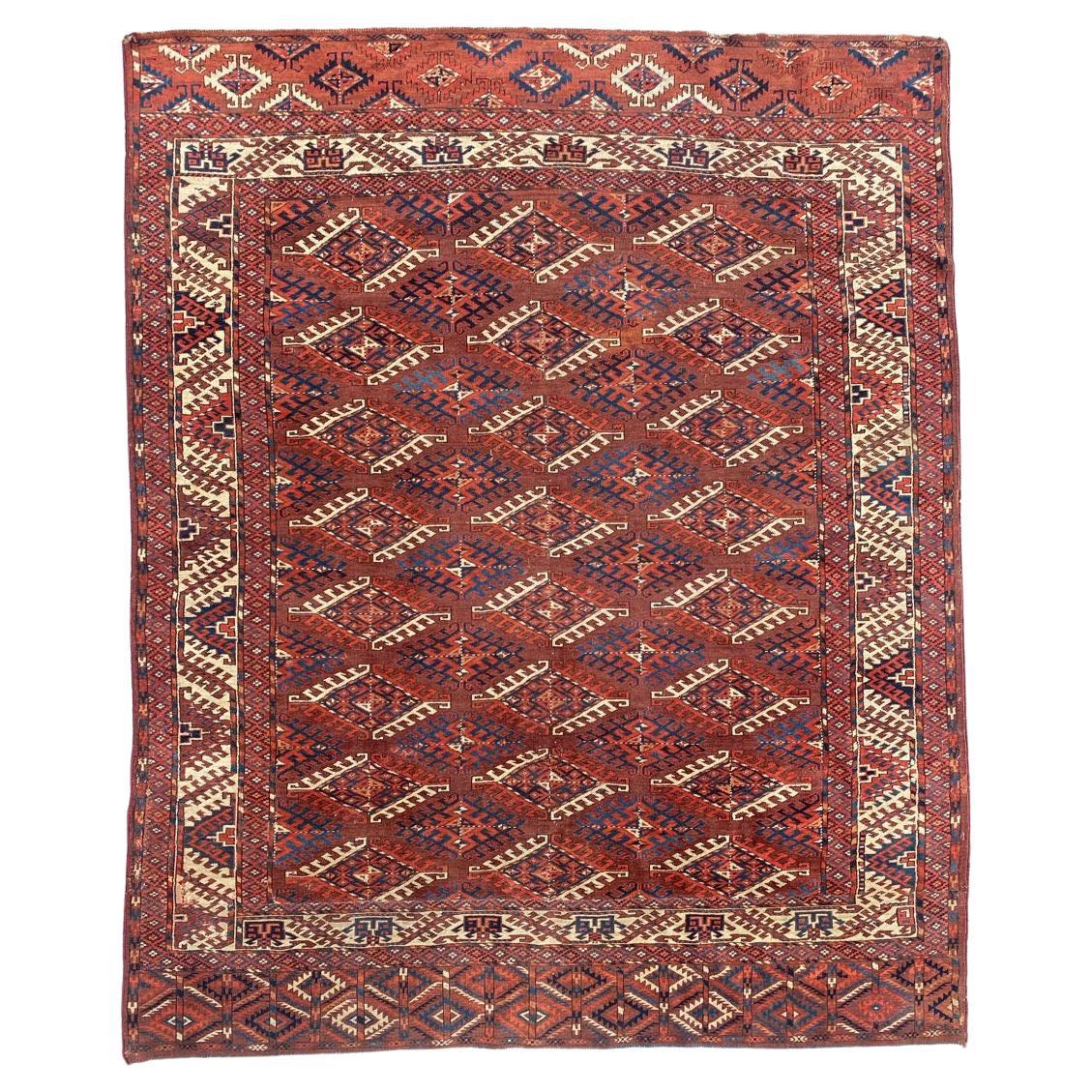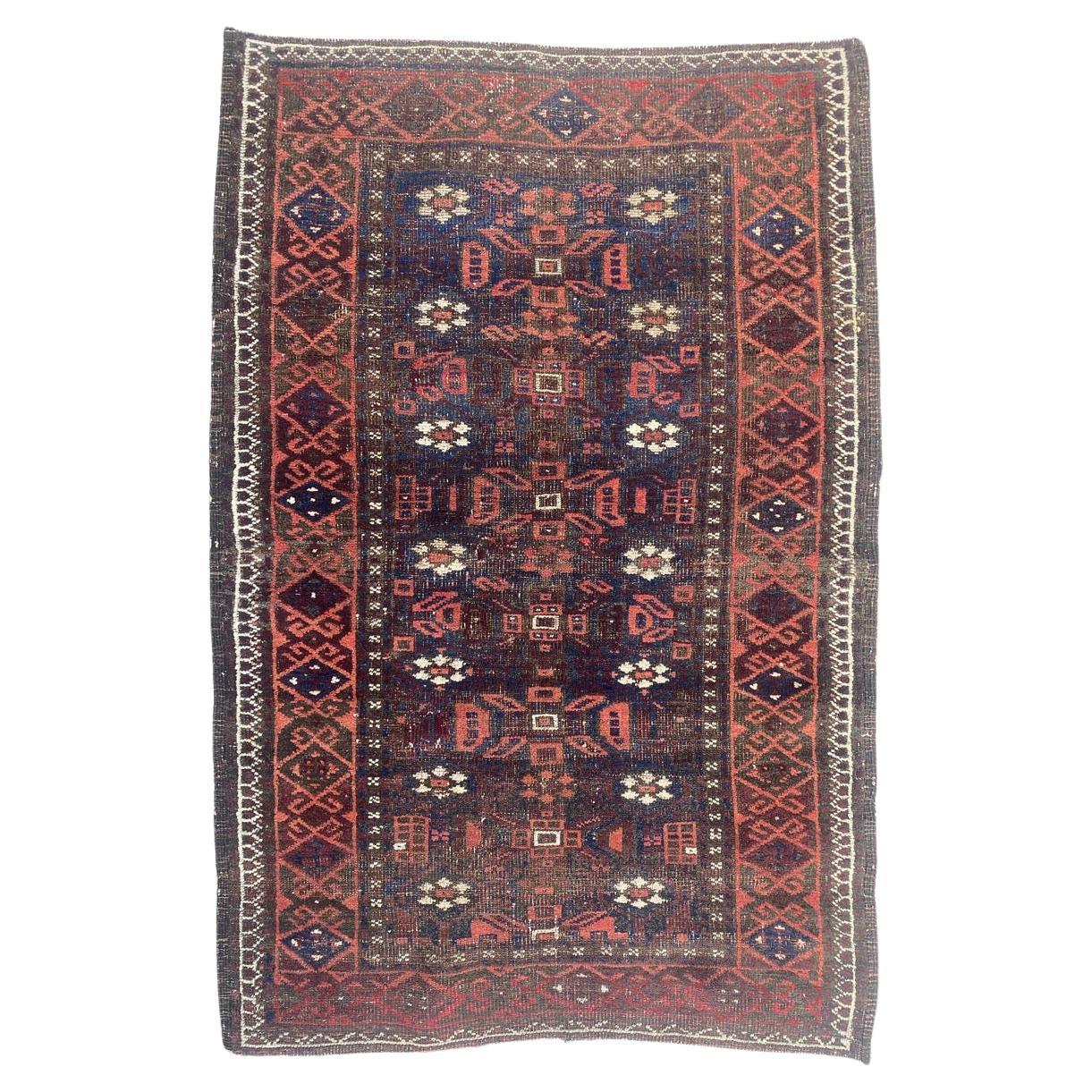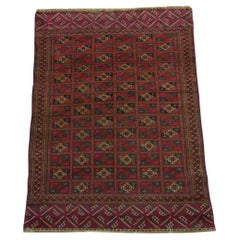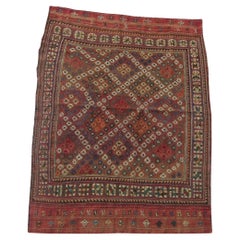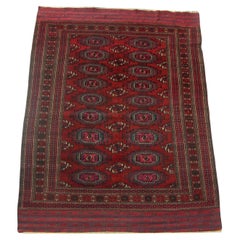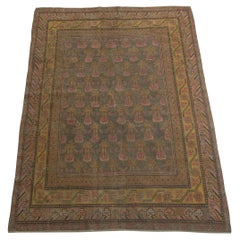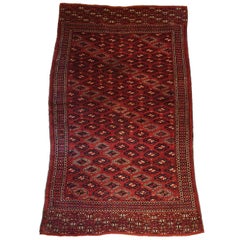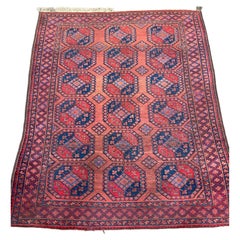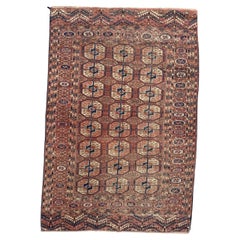Items Similar to Antique Turkmen Salor Part Silk Rug Geometric Design
Want more images or videos?
Request additional images or videos from the seller
1 of 5
Antique Turkmen Salor Part Silk Rug Geometric Design
$10,500
£7,928.63
€9,136.88
CA$14,819.96
A$16,338.67
CHF 8,547.87
MX$200,445.15
NOK 107,600.69
SEK 100,623.66
DKK 68,234.48
About the Item
Salor rug, floor covering handmade by the Salor Turkmen of Turkmenistan. Most consistent in design are the main carpets, with a quartered gul (motif) showing a small animal figure in the inner part of each quadrant. The faces of storage bags are more varied, with several types of guls, most of which are shared by the Tekke and Saryk tribes, to whom the Salor seem most closely related. Salor ensis have been identified, and the tribe has produced a group of unusually long pieces in torba (storage-bag) form that seem to be intended as decorative trappings. Patches of pink silk are found in some examples, which also show structural differences setting them apart from other Turkmen rugs.
Turkmen tradition maintains that the Salor are an ancient tribe of high status, although their fortunes have been in decline for the last century and a half.
- Dimensions:Width: 71 in (180.34 cm)Length: 97 in (246.38 cm)
- Style:Other (In the Style Of)
- Materials and Techniques:
- Place of Origin:
- Period:1900-1909
- Date of Manufacture:1900
- Condition:good condition.
- Seller Location:Los Angeles, US
- Reference Number:Seller: 5114y1stDibs: LU9020235536502
About the Seller
5.0
Platinum Seller
Premium sellers with a 4.7+ rating and 24-hour response times
Established in 1920
1stDibs seller since 2023
65 sales on 1stDibs
Typical response time: <1 hour
- ShippingRetrieving quote...Shipping from: Los Angeles, US
- Return Policy
Authenticity Guarantee
In the unlikely event there’s an issue with an item’s authenticity, contact us within 1 year for a full refund. DetailsMoney-Back Guarantee
If your item is not as described, is damaged in transit, or does not arrive, contact us within 7 days for a full refund. Details24-Hour Cancellation
You have a 24-hour grace period in which to reconsider your purchase, with no questions asked.Vetted Professional Sellers
Our world-class sellers must adhere to strict standards for service and quality, maintaining the integrity of our listings.Price-Match Guarantee
If you find that a seller listed the same item for a lower price elsewhere, we’ll match it.Trusted Global Delivery
Our best-in-class carrier network provides specialized shipping options worldwide, including custom delivery.More From This Seller
View AllAntique Fine Persian Baluch Rug
Located in Los Angeles, US
Baluch Rugs – Antique Baluch rugs are a unique phenomenon in the world of antique Oriental rugs. Rather than originating from one specific, easily identified region, Baluch rugs are ...
Category
Vintage 1920s Asian Tribal Russian and Scandinavian Rugs
Materials
Wool
Antique Nomadic Sumak Rug - 5'10'' X 4'3''
Located in Los Angeles, US
Antique Nomadic Rugs:
– To most people the concept of the area rug, especially the pile rug, is virtually synonymous with the Orient, above all P...
Category
Vintage 1910s Tribal Russian and Scandinavian Rugs
Materials
Wool
1900s Antique Turkeman Rug
Located in Los Angeles, US
1900s Antique Tribal Turkeman Rug, handmade and hand-knotted
Category
Antique Early 1900s Turkish Tribal Turkish Rugs
Materials
Wool, Cotton
Antique Samarkand Rug 1900 -8'4'' X 5'8''
Located in Los Angeles, US
Antique Uzbek Samarkand Rug 8'4'' X 5'8'', tribal and traditional, antique and vintage, wool on cotton foundation
Category
Antique Early 1900s Uzbek Tribal Russian and Scandinavian Rugs
Materials
Wool, Cotton
Antique Baloutch Geometric Design Rug 6'7''x3'2''
Located in Los Angeles, US
Antique Baloutch Stylish Geometric Design 6'7''x3'2''
one of a kind 1 of 1
more info upon request
Category
Antique Early 1900s Unknown Kilim Central Asian Rugs
Materials
Wool, Cotton
Antique Kilim Geometric Runner Rug 13'1'' X 5'11''
Located in Los Angeles, US
Antique rugs that are called “Kilim rugs”, primarily refer to a type of flat weave rug that was produced without knotted pile. Because these antique rugs are found across the globe, ...
Category
Antique Early 1900s Asian Other Russian and Scandinavian Rugs
Materials
Wool, Cotton
You May Also Like
834 - Pretty Turkmen Bukhara Carpet from the 20th Century
Located in Paris, FR
834 - very beautiful Turkmen carpet from the end of the 20th century with a nice Bukhara pattern with a beautiful Bukhara Guls and geometric design, and beautiful colors with red, or...
Category
Vintage 1930s Turkmen Tribal Central Asian Rugs
Materials
Wool
Antique Afghan Turkmen Ersari Rug circa 1920
Located in Morton Grove, IL
This rug is hand woven in Afghanistan. Known as Ersari these Turkaman woven rugs dates back many centuries.Ersari rugs were made with a lustrous wool that could absorb vegetable dyes...
Category
Vintage 1920s Afghan Other Central Asian Rugs
Materials
Wool
nice antique Turkmen Bokhara rug
Located in Saint Ouen, FR
Beautiful late 19th century Turkmen rug with nice geometrical and traditional design of Bokhara rugs and nice natural colours, entirely hand knotted with wool on wool foundation
Wea...
Category
Antique Late 19th Century Turkmen Tribal Central Asian Rugs
Materials
Wool
738 - Vintage Design Rug End Turkmen Afghan Bukhara
Located in Paris, FR
738 - beautiful Turkmen Bukhara carpet from the 20th century very decorative with a nice geometric design with Bukhara Guls and a red field with blue, ...
Category
Vintage 1950s Central Asian Tribal Central Asian Rugs
Materials
Wool
Bobyrug’s Nice Antique Turkmen Yumut Rug
Located in Saint Ouen, FR
Pretty late 19th century large yumut rug with beautiful tribal Turkmen design and nice natural colors, entirely and finely hand knotted with wool velvet on wool foundation.
✨✨✨
"Exp...
Category
Antique Late 19th Century Afghan Tribal Central Asian Rugs
Materials
Wool
Bobyrug’s Antique Turkmen Baluch Rug
Located in Saint Ouen, FR
Nice late 19th century Turkmen Afghan Baluch rug with beautiful tribal design and nice natural colors, entirely hand knotted with wool velvet on wool foundation.
✨✨✨
"Experience the...
Category
Antique Late 19th Century Afghan Tribal Central Asian Rugs
Materials
Wool
More Ways To Browse
Antique Sale
Design Sale
Swiss Vintage Sofa
Tea Pot Set
Thick Coffee Table
Used Rocker Chair
Vintage Railway Posters
Wrought Bench
19th Century Leather High Back Chairs
1960s Teak Coffee Table
19th Century Cane Chairs
Antique English Stool
Antique Nesting Tables Furniture
Antique Silver Wire
Art Deco Walnut Armchairs
Boucle Fabric Dining Chair
Boucle Walnut Chair
Danish Lounge Chair With Ottoman
